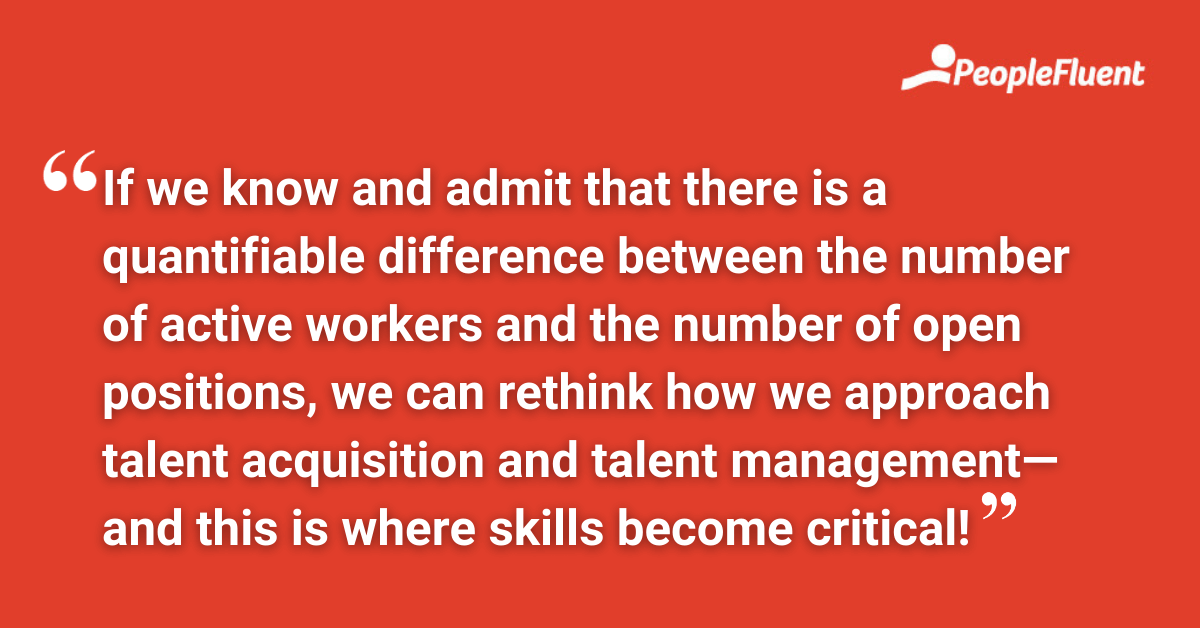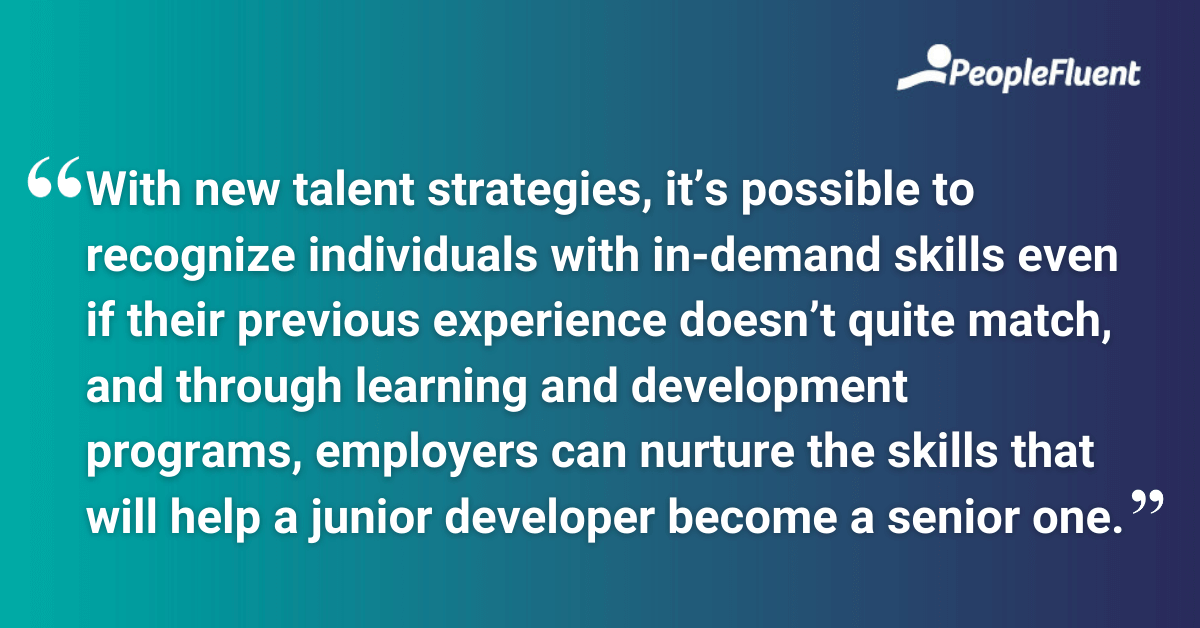Published: Feb 22, 2022Time to read: 5mins Category: Insights
The Great Resignation Debate: Do We Have a Labor Shortage or a Skills Shortage?
While the Great Resignation rages on, its ripple effects are touching all sectors across the globe. There’s no doubt that since the onset of the pandemic, our working world has changed, affecting how we hire, how often, and where. In this article, we examine some of the theories behind the shift and what it means for businesses looking to recruit and retain top talent.
The challenges of living and working through the COVID-19 era are well-documented at this point. We have a keen sense of how different things were before the pandemic versus now. From supply chain interruptions to shorter store hours and longer wait times, the world is changing before our very eyes.
But the most significant area of disruption, and perhaps most surprising, has been the workforce. Call it the Great Resignation, Great Rethink, or Great Labor Shift, the phrasing doesn’t change the fact that workers are leaving jobs en masse to find new ones. It wasn’t until the quit rate reached record levels in August 2021 that organizations started to take note and realize how this might impact their ability to recruit and retain workers.
In the months since the narrative began, there’s been a debate about why this is happening and what’s behind the shift in mindset. On one side of the proverbial fence are those arguing that there’s a labor shortage, a dearth of available workers compounded by those unwilling or unable to return to work. On the other are those who believe it’s a skills shortage that’s preventing companies from filling roles with specific requirements.
So, who is right?
RELATED READING | ‘Increase Hiring Efficiency With These 4 Best Practices’
The Labor Side
Most of the evidence for the labor shortage argument points to the fact that demand for workers outweighs supply. Why?
A few reasons come to mind: the U.S. experienced a shrink in population size due to the pandemic, fewer immigrants entering the country because of extended border closings, high numbers of women left the workforce to take care of families and loved ones as schools and daycare facilities shuttered, some chose to retire rather than keep working, while others with health issues don’t feel safe as the health crisis continues, vaccine mandates, and so on.
It’s a long list, making it impossible to pinpoint any one cause. Gad Levanon of The Conference Board’s Labor Market Institute also calls out that many people have become more selective about the types of roles they’re willing to take on. Still, no matter which way you look at the situation, it’s clear that there are indeed fewer available workers than there are available jobs.
That means, to some extent, the answer is yes, there is a labor shortage. But it prompts a new, more important question, what are we going to do about it?

HOT TOPIC | ‘4 Practical Ways to Recruit Diverse Talent’
The Skills Side
If we know and admit that there is a quantifiable difference between the number of active workers and the number of open positions, we can rethink how we approach talent acquisition and talent management—and this is where skills become critical!
For instance, a recent Wall Street Journal article spotlighted the struggle to find recruiters, with the managing director of a Houston-based recruiting firm explaining that in this instance, many don’t realize recruiting is a viable career option, and yet, “Many of the basic skills needed for the role can be found across industries, and they are similar to what makes a good salesperson … strong communication and organizational skills, persistence and just being talkative.”
This echoes the sentiment of a Twitter exchange about tech talent and the possible unwillingness to hire and train junior developers. The author wrote, “Every time I post a senior job, I get maybe 30 responses. Every time I post a junior job, I get 300+. Why? There is a glut of talented juniors out there that don’t get hired for up to a year after graduation. You can train five junior devs in the time + money + opportunity it takes to hire one senior.”

MORE FROM THE BLOG | ‘Skills-Based Hiring: 5 Ways Change Management Can Help You Nail It—Every Time!’
Being the Change
Here’s another disparity that leads to yet another question… if we can’t find the talent we need, can we create it instead? Here, the answer is more apparent: yes. The WSJ piece cited the example of a remote training program for aspiring tech recruiters that “helps career switchers and early-career workers learn the ropes, including industry jargon, the differences across software engineering roles and cold-emailing strategies to poach employed workers.”
Likewise, with new talent strategies, it’s possible to recognize individuals with in-demand skills even if their previous experience doesn’t quite match, and through learning and development programs, employers can nurture the skills that will help a junior developer become a senior one. Leveraging the right technologies streamlines these initiatives, personalizing experiences to candidates and workers, resulting in better outcomes for everyone involved.
And though challenges of the COVID-19 era persist, we’re also seeing new opportunities pop up, opportunities to empower workers, enhance their lives, and improve how the world works.
RELATED READING TO DOWNLOAD TODAY | ‘6 Strategies for Attracting Top Talent: Hire the Right People—Before Your Competitors Do!’
Recruit the people you need, when you need them with PeopleFluent Recruitment
PeopleFluent’s recruitment management software is built to support you in today’s changing landscape—allowing companies to hire at scale, manage your employer brand, and engage with candidates as individuals.